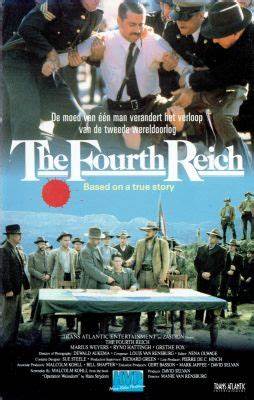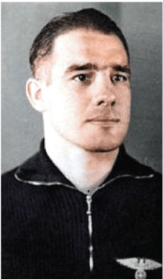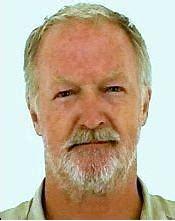 THE FOURTH REICH (1990) – This film’s greatest obstacle to greater renown is its own title. Anyone coming across the title The Fourth Reich will quite reasonably assume it’s a B-movie about Nazi war criminals in hiding trying to resurrect their rightfully defeated cause.
THE FOURTH REICH (1990) – This film’s greatest obstacle to greater renown is its own title. Anyone coming across the title The Fourth Reich will quite reasonably assume it’s a B-movie about Nazi war criminals in hiding trying to resurrect their rightfully defeated cause.
If someone rents or buys it expecting an espionage thriller like The ODESSA File, The Holcroft Covenant or even The Boys from Brazil, they’ll be disappointed that it is instead a quality dramatic account of a NON-FICTIONAL, real-life attempt by Nazi agents to assassinate South African leader Jan Smuts in 1942.
This movie – produced in South Africa – was partially based on the non-fiction book For Volk and Fuhrer, so even THAT title wouldn’t truly convey the subject matter to anyone outside of people who are so into South African history that they would recognize those words in the context of a thwarted Nazi assassin.
Enough preamble. I started my review this way to hopefully catch the eyes of readers who WERE assuming this is just more warmed-over, regenerate Nazi fiction. Please don’t dismiss this powerful movie due to false assumptions.
 THE FOURTH REICH deals with South African boxer Robey Leibbrandt, who participated in the 1936 Olympics where he met and shook the hand of Adolf Hitler. Leibbrandt was strangely impressed with Hitler and his philosophy of hatred, and after becoming South Africa’s Heavyweight Boxing Champion in 1937 he returned to Germany in 1938.
THE FOURTH REICH deals with South African boxer Robey Leibbrandt, who participated in the 1936 Olympics where he met and shook the hand of Adolf Hitler. Leibbrandt was strangely impressed with Hitler and his philosophy of hatred, and after becoming South Africa’s Heavyweight Boxing Champion in 1937 he returned to Germany in 1938.
Robey was studying at the Reich Academy of Gymnastics when World War Two broke out in September 1939, and volunteered to serve the Nazis militarily. After he completed his military training, his commanders felt Leibbrandt would be more effective as a Nazi agent in South Africa, promoting their cause and recruiting saboteurs.
Under the alias Walter Kempf, Robey was sent back to his native land as part of Operation Weissdorn, a plan to assassinate South African leader Jan Smuts for leading South Africa into World War Two as a British ally rather than remaining neutral like his opponents wanted.
The ultimate goal was to install a pro-Nazi regime to replace Smuts, and “Walter Kempf” was covertly put ashore back in South Africa in June of 1941. Joining up with anti-war, anti-British group Ossewabrandwag, the Nazi agent tried to recruit operatives.
 Ultimately, Leibbrandt was only able to gather roughly five dozen men and they set about sabotaging rail lines, bridges and power plants as well as cutting telephone and telegraph lines whenever they could. A firefight with authorities in late 1942 resulted in Walter Kempf being identified as Robey Leibbrandt.
Ultimately, Leibbrandt was only able to gather roughly five dozen men and they set about sabotaging rail lines, bridges and power plants as well as cutting telephone and telegraph lines whenever they could. A firefight with authorities in late 1942 resulted in Walter Kempf being identified as Robey Leibbrandt.
Robey was now a fugitive but remained at large, still hoping to assassinate Jan Smuts. South Africa’s Colonel Jan Taillard, one of history’s neglected heroes, had been assigned to thwart Leibbrandt and his plans early on.
Taillard succeeded in his dangerous mission to shut down the Nazi spy network, often functioning undercover among South Africans who detested England and/ or felt sympathetic to Germany. Jan Taillard is capable but brusque, and his wife advises him at one point to “Try and follow orders this time.”
Lest that make potential viewers fear that the movie becomes a “maverick agent playing by his own set of rules” action flick, let me assure you everything stays low-key and realistic. The approach is more like the original Day of the Jackal, with its professional investigator doggedly working his case while the assassin he searches for edges closer to his target.
SPOILERS: Taillard successfully led Robey to his arrest. We all know that Jan Smuts was not assassinated, but what is galling is that Robey Leibbrandt, though sentenced to life in prison in 1943, was released after serving just five years in a general political sentiment of “let’s forgive the nationalist movements which opposed South Africa’s participation in World War Two.”
For decades, Leibbrandt was actually hailed as a folk hero by many in South Africa, while Jan Taillard lived under a cloud of resentment as a figurative “narc” who had worked against his fellow South Africans on behalf of the British Empire.
Text at the end of the movie acknowledges that historical injustice, and openly speaks on behalf of Taillard’s memory and reputation.
 The Fourth Reich, directed by Manie van Rensburg, stars Marius Weyers (at right) as Colonel Taillard and Ryno Hatting as Robey Leibbrandt. Grethe Fox portrays Erna Dorfman, who interacted with both Taillard and Leibbrandt. Elize Cawood plays Taillard’s wife Romy, who, though supportive, had to be kept ignorant of her husband’s undercover work.
The Fourth Reich, directed by Manie van Rensburg, stars Marius Weyers (at right) as Colonel Taillard and Ryno Hatting as Robey Leibbrandt. Grethe Fox portrays Erna Dorfman, who interacted with both Taillard and Leibbrandt. Elize Cawood plays Taillard’s wife Romy, who, though supportive, had to be kept ignorant of her husband’s undercover work.
Though this was South Africa’s most expensive film, it obviously does not have production values equivalent to sweeping epics like Lawrence of Arabia, or Reds, etc. It is very well made, however, and if you think of this 3 hour and 3 minute movie as a modest made-for-TV venture I believe you’ll be pleasantly surprised and impressed.
FOR ANOTHER LOOK AT ASTONISHINGLY FORGOTTEN HISTORY CLICK HERE.

Pingback: El Noticiero de Alvarez Galloso
Logged, thank you! I hope you’re getting plenty of rest after what you went through.
Thanks for another detailed quality review.
Thank you for the kind words, sir!
Well reviewed again 👌
Thank you very much for saying so!
🙏
You’re so kind-hearted!
☺️
😀
😂
Hmm, that Leibbrandt fellow had kind of a Colin Farrell thing going on. Maybe that explains the “folk hero” business …
Could be, I guess, but he had taken to sporting one of those weird “not quite mustaches” like his idol Hitler had. Still, in certain circles I guess that would have been considered a boon. South African veterans who had served in World War Two were, by some accounts, shocked at the high regard for the Fallen Nazis by some of their fellow countrymen.
This does sound interesting. I would say it’s hard to imagine Robey falling for Hitler’s beliefs, but then, I see what passes as truth these days. Eye of the beholder, I suppose.
I know what you mean, it’s hard to figure out.
A very interesting story and one I have never heard of before. I’m surprised it’s not as well known as it should be. Great read and more fascinating insights into history.
Thank you very much for the kind words!
Great reviews as always. I haven’t heard about the story “The Fourth Reich” before, but it does sound intriguing to me. I’ve always had an interest in the Holocaust, so this seems like a story I would enjoy. It reminds me a lot of classic movies about the Holocaust that I adore. For instance, it reminded me a lot of “The Zone of Interest”. Jonathan Glazer’s Oscar-winning film offered an insightful glimpse at the mass genocide by focusing on perspectives of Nazis. One of the best movies of 2023, and one of the greatest movies ever made about the Holocaust.
Here’s why it’s a must-see:
https://huilahimovie.reviews/2024/07/16/the-zone-of-interest-2023-haunting-holocaust-historical-drama/
Thank you for saying so!